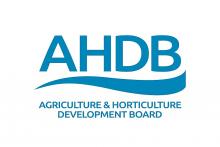| Farmers Weekly | Direct Driller | Food & Farming Futures |
| Farmers Guardian | Practical Farm Ideas | Fodder from Table |
| Crop Production Magazine | AHDB Market Update | Fertiliser Matters |
| Agronomist and Arable Farmer | The Poultry site | ADAS Crop Action |
| Pulse Magazine | Organic Bulletin | |
| Poultry World | ||
| Pig World |
Share more in the comments below, or add as content or Group that can be connected across the rest of the PEP site.






